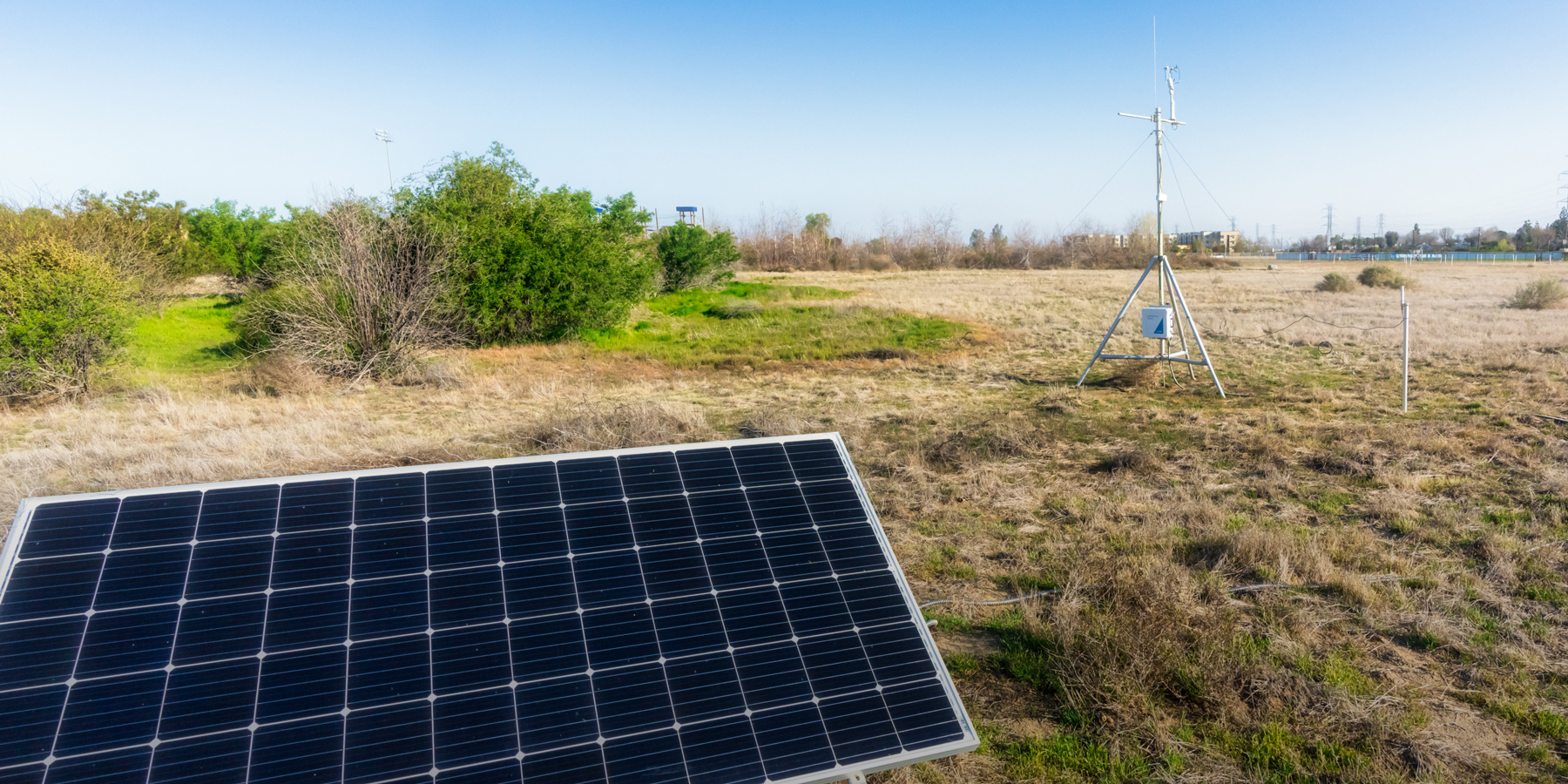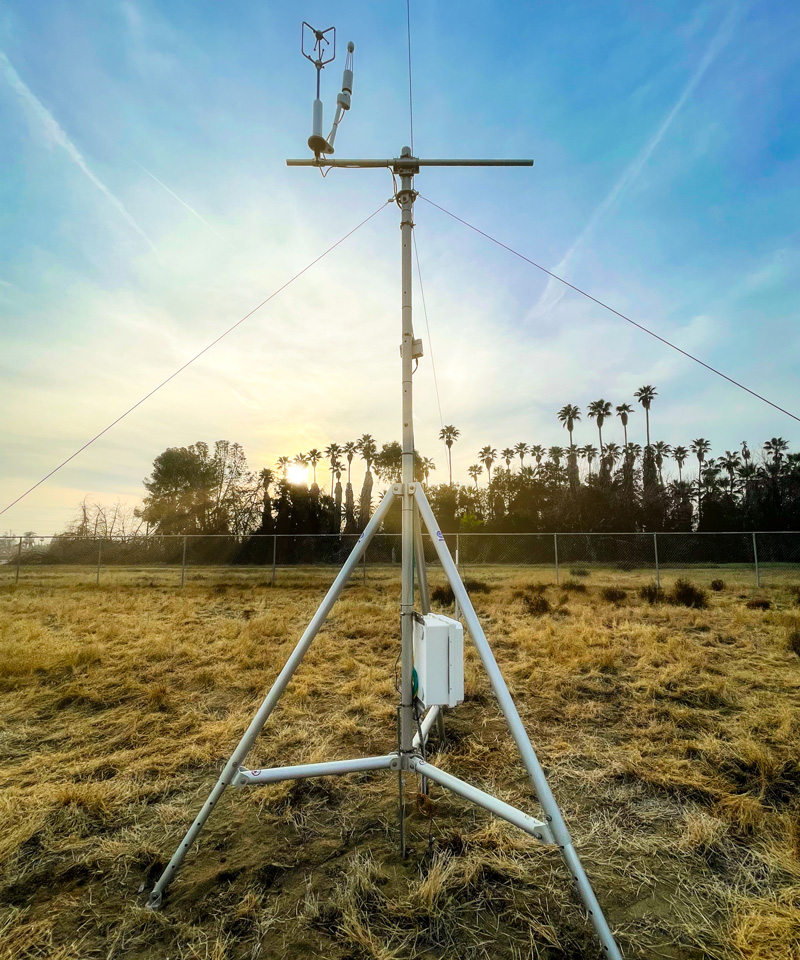
Towering over the Land
CSU BAKERSFIELD
California State University, Bakersfield recently installed an
Eddy Covariance Flux Tower on campus that can measure the carbon and water vapor flowing in and out of the local landscape. The hope is the tower can contribute to a wide range of interdisciplinary climate change research projects—from biology and computer science experiments to measuring the effectiveness of the campus's sustainability efforts.
“It's continuously running and will now become a long-term monitoring station. As CO2 in the atmosphere is increasing, we'll pick that up year after year," says Biology Professor Anna Jacobsen, Ph.D., who co-directed the grant funding the tower. “We have opportunities for our students to do things that connect them in a tangible way to a broader scientific effort to monitor terrestrial photosynthesis and respiration patterns, CO2 production and atmospheric CO2."
Biology Professor Brandon Pratt, Ph.D., a driving force behind acquiring the tower, is already putting its measurements to use as he studies carbon sequestration in native California shrublands, called chaparral, and the grasslands that have replaced them. His research will help the state understand how its changing ecosystems could affect climate change.

The Eddy Covariance Flux Tower on CSU Bakersfield’s Environmental Studies Area.
“In the last 50 to 100 years, we've lost about 20 to 30 percent of those shrublands … in wild land areas, national forests or national parks like in the Santa Monica Mountains," he says. “These are areas that have for various reasons been converted into grasslands, and the dominant reason seems to be changing fire dynamics on these landscapes."
The shrublands can tolerate fires every 20 to 50 years—but with fires occurring more frequently, chaparral are giving way to grasses and small herbs that dry out more quickly and increase regional temperatures, worsening drought and fire conditions. These grasslands, though, don't store as much carbon as the chaparral ecosystems and may even be sources of carbon.
To test the climate effects of these two habitats, Dr. Pratt has planted two plots on the campus's outdoor Environmental Studies Area—one with shrubs, one with grasses—and will manipulate the watering to simulate drought conditions. The tower will then record the carbon levels emitting from both plots.
He's also waiting on approval for another grant that would allow him to install more towers throughout Southern California to do similar monitoring in natural environments. “We want to … ask: What is this doing to the regional carbon, both in terms of storage and source-sink dynamics, as you're losing shrubland and going to grassland?" Pratt says. “But, of course, CO2 doesn't stay in place. It blows all over the globe, so this is really a global question and a global issue."
His research will also support ongoing restoration efforts on chaparral that has been fully or partially converted to grasslands. State conservationists are currently working on restoring areas that are unlikely to burn frequently, have high biodiversity and help prevent erosion and landslides.
“The timing is absolutely perfect to start asking what to do about the shrublands because the motivation is there and people are working on this now for the first time," Pratt explains. “The conservation biologists, the land managers with the Forest Service and the National Park Service are getting serious about this, and they have some funds to back it up. We're getting this research coming in telling us the scope of the problem, that it's bigger than we thought it was. And then we're having these droughts, and it's exacerbating the problem. So, it just feels like everything is coming to a head."
Story: Michelle McCarthy
photoGRAPHY: PATRICK RECORD
Share this story